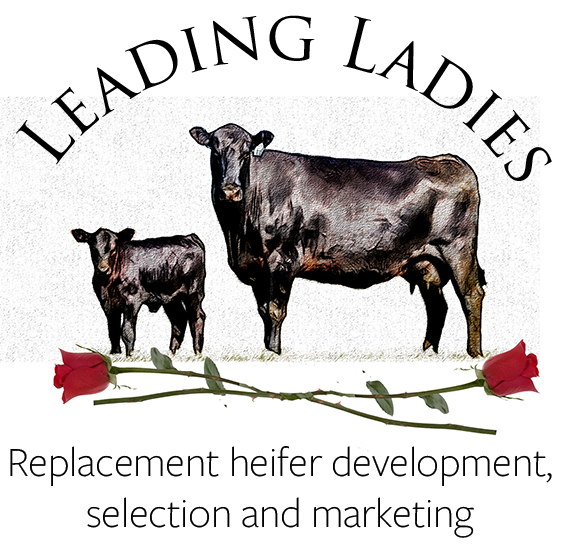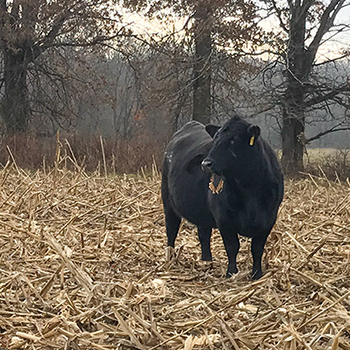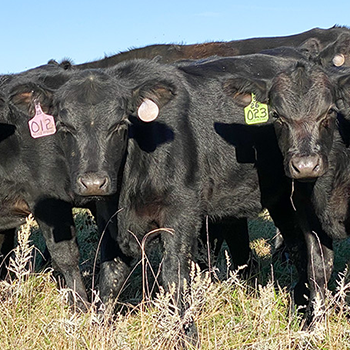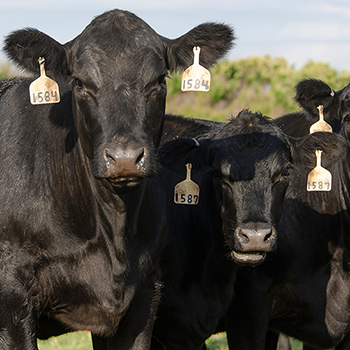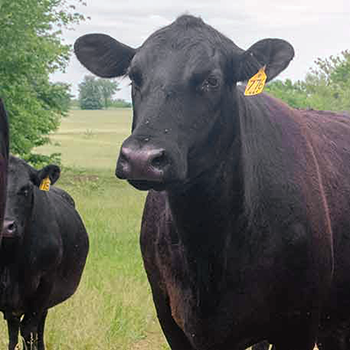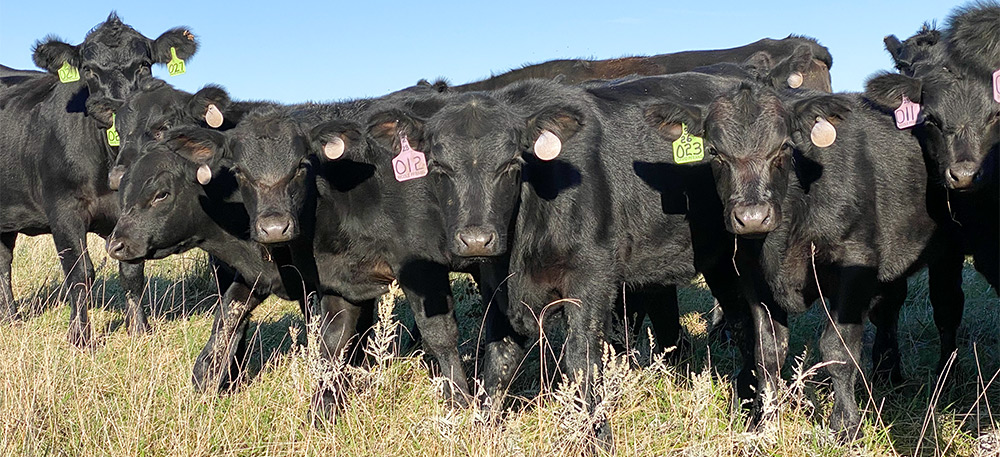
Heifer Development: Selection and Management
Not every heifer in the herd should be kept as a replacement.
Developing replacement heifers depends on their age at puberty and nutrition. Fertility and age at puberty are heritable, but influenced by nutrition. Optimal nutrition is important for growth and development, but this doesn’t mean overfeeding. A heifer with genetics for early puberty and fertility, on a moderate plane of nutrition, will usually be more successful for a long life of production than a less fertile heifer that is overfed to reach target weight for breeding.
Jordan Thomas, assistant professor and state extension cow-calf specialist at the University of Missouri, says a heifer calf developed as a potential replacement is just a potential replacement until pregnancy diagnosis.
“It is tempting to think we can make selection decisions at weaning based on physical attributes — what the heifer should look like,” he says.
If only a small number of heifers are developed for breeding, producers end up having to retain all the ones that become pregnant, even if some conceived late.
“People often breed heifers for 60 days, but there’s a lot of difference between a heifer that conceived on the first day and one that conceived on the last day,” says Thomas. “On many operations the length of calving season for heifers is too long.”
A short breeding season can be part of the development and selection process. Artificial insemination (AI) protocols, such as fixed-time AI, can be used to begin the breeding season. This could be followed by another round of AI or a period of natural service. Replacements should be chosen based on whether the heifer conceived early. The late-conceiving heifers should be marketed as bred heifers, Thomas advises.
Within a heifer development program, he says, there can be three products: the bred heifer retained in the herd, the bred heifer that needs to be marketed (that will calve later), and the open heifer.
“Whether to use a short breeding season is just a business decision. If the cost of heifer development is high and open heifers are unprofitable from a value-of-gain perspective, it would be better to use a longer breeding period and market the later-bred heifers. If later-bred heifers are unprofitable to market, a shorter breeding period is advantageous. Either way, the operation needs to develop enough heifers to be selective about which ones get to stay,” he explains.
Depending on forage resources, one method is simply to develop all heifer calves (except a few that obviously won’t be good candidates as cows), expose them for a short breeding season, do an early pregnancy diagnosis, and sell the open ones while they are still valuable as feeder animals. They basically sort themselves, suggests Thomas.
Many people try to select replacements at weaning time, but at that age it can be hard to identify the heifers that will conceive early.
“For commercial heifers, this is what the rancher gets paid for: ability of the heifer to breed early and stay in the herd,” he says.
You don’t want one that breeds late and comes up open after her first or second calf. It’s been said that a heifer doesn’t pay for herself until she’s had several calves. Thomas doesn’t think of it that way.
“If you are developing heifers yourself, you have captured a lot of value in taking that heifer from a weaned calf to a bred female,” he says. “That appreciation in value is a big deal, and she maintains her value fairly well through her first several years in production. But we can lose a lot of that value if she doesn’t breed back and is marketed as nonpregnant.”
Heifers can be developed on forage and not pushed for fast growth or pampered with higher-quality feeds.
“If you can profitably develop heifers to a higher-condition end point, this may be an acceptable commercial strategy,” says Thomas. “At the end of the day, it is still the heifers that conceive early that are the most valuable and should be prioritized when selecting which heifers to retain as replacements.”
A short breeding season makes for a short calving season, giving the heifers more time (85-90 days) to recover from calving and rebreed. Early-calving females stay in the herd longer. They are able to breed back again and also wean heavier calves, simply because their calves are older than the herd average. Genetic selection for weaning weight can be a double-edged sword if cows become larger and less efficient, requiring more feed. Yet the age of calf relative to weaning weight is always beneficial.
“This is a major opportunity to increase weaning weight without risk of dragging along an increase in cow size and costs along with it,” says Thomas. “A calf born just one estrous cycle (21 days) earlier than another calf will be 40 to 45 pounds heavier than the later-born calf.”
It doesn’t matter whether the cows are small-, medium- or large-framed; across the herd the early-born calves will be bigger than the later-born calves.
“The cow will wean a higher percent of her body weight if she calves early. In the cow-calf business, early-calving cows and short calving seasons are a critical piece of not only the return potential but also the cost structure of the operation,” he says.
Editor’s note: Heather Smith Thomas is a freelance writer and cattlewoman from Salmon, Idaho. Photo by Kasey Brown.
